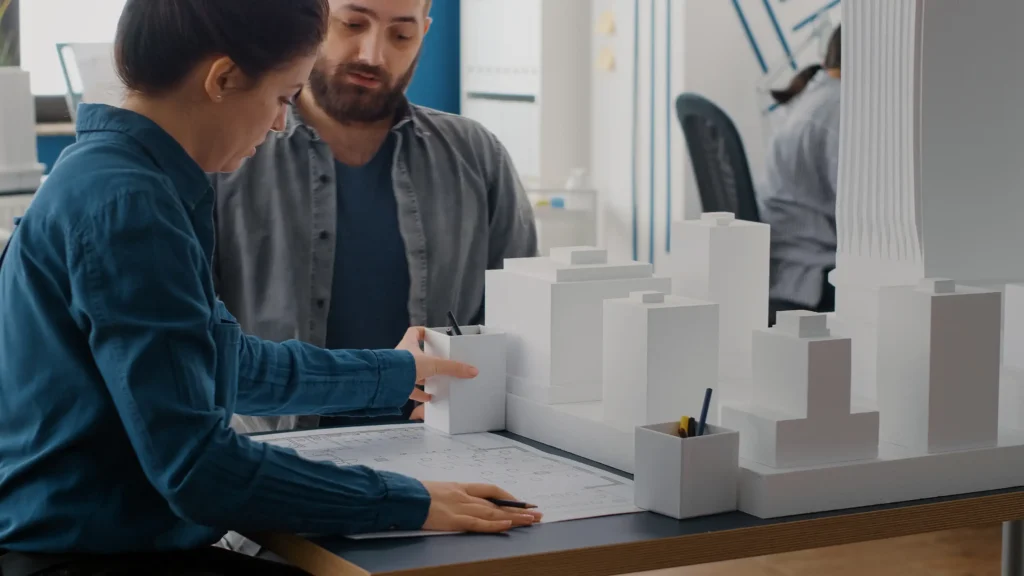Building design is both an art and a science that requires architects, engineers, and construction workers to work together. Among them, structural engineers are very important for making sure that buildings are safe and have strong structures. This in-depth look goes into the complicated process of how structural engineers create buildings. It looks at the different steps, methods, and new techniques that are used to make structures that are strong and durable.

How to Understand What Structural Engineers Do:
Professional structural engineers plan buildings that can safely hold up against forces and loads while also making sure that people inside are safe. Their knowledge includes a wide range of skills, such as analysing structures, choosing materials, and building methods. There are many careful steps that go into designing a building, and each one is important to the project’s general success.
Step 1: Make initial plans and check out the site
The design process starts with a full analysis of the place and the environment around it. Site studies are done by structural engineers to look at things like the land’s topography, soil conditions, and geological stability. They also look at local environmental laws, building codes, and zoning rules to make sure they are followed and to deal with any problems or restrictions that might come up.
Step 2: Come up with ideas and do feasibility studies
After evaluating the site, structural engineers move on to the conceptual design step. This means coming up with ideas and looking into different building systems and techniques that will work with the project’s goals and needs. Feasibility studies look at different design choices to see if they will work, taking into account things like cost, functionality, and the way the building looks.
Step 3: Modelling and analysing the structure
As soon as the basic plan is finished, structural engineers use complex modelling and analysis methods to check the building’s strength and functionality. Engineers can simulate how structural systems will behave under different loads using finite element analysis (FEA), computer-aided design (CAD), and building information modelling (BIM) tools. Engineers make sure that the design is efficient, safe, and long-lasting by analysing it carefully.
Step 4: Design and documentation in great detail
After the structural analysis is done, structural engineers make detailed plan drawings, specifications, and calculations that are used as a guide for building. This includes figuring out the sizes and details of beams, columns, slabs, walls, foundations, and other building parts. Clear and accurate communication of the plan to contractors, fabricators, and other people involved in the building process is ensured by detailed documentation.
Step 5: Work together with architects and other design experts
During the design process, structural engineers work closely with architects, contractors, and other design pros to make sure that structural parts fit in with the design of the building as a whole. Coordinating design efforts, dealing with technical issues, and making sure that the structural system fits with the building’s architectural concept and functional needs are all part of this job.
Step 6: Inspecting the work and making sure it’s done right
During the building phase, structural engineers keep an eye on things to make sure the building is built according to the plans and specifications that were accepted. This includes checking the site, making sure the quality is good, and evaluating the structure to make sure it meets building codes and other rules. Engineers also help contractors with technical issues and give them advice on how to fix problems that come up during building.
Step 7: Changes in the way buildings are designed and built:
In the past few years, changes in technology and building methods have completely changed the area of structural engineering. New technologies like 3D printing, prefabrication, and modular construction have made the planning and building process easier, cheaper, and more effective. Also, environmentally friendly and long-lasting building solutions are becoming more popular thanks to sustainable design practices like green building certification programmes and energy-efficient building systems.
In conclusion:
As a conclusion, the way structural engineers create buildings is a complicated process that needs careful planning, analysis, and teamwork. Structure engineers are very important to shaping the built environment and making buildings that are safe, useful, and nice to look at by using their technical knowledge, creativity, and ability to think of new ideas. As structural engineering continues to grow and change, let us remember how important it is to make buildings that are sustainable, strong, and exciting so that they improve the lives of people who live in them.
